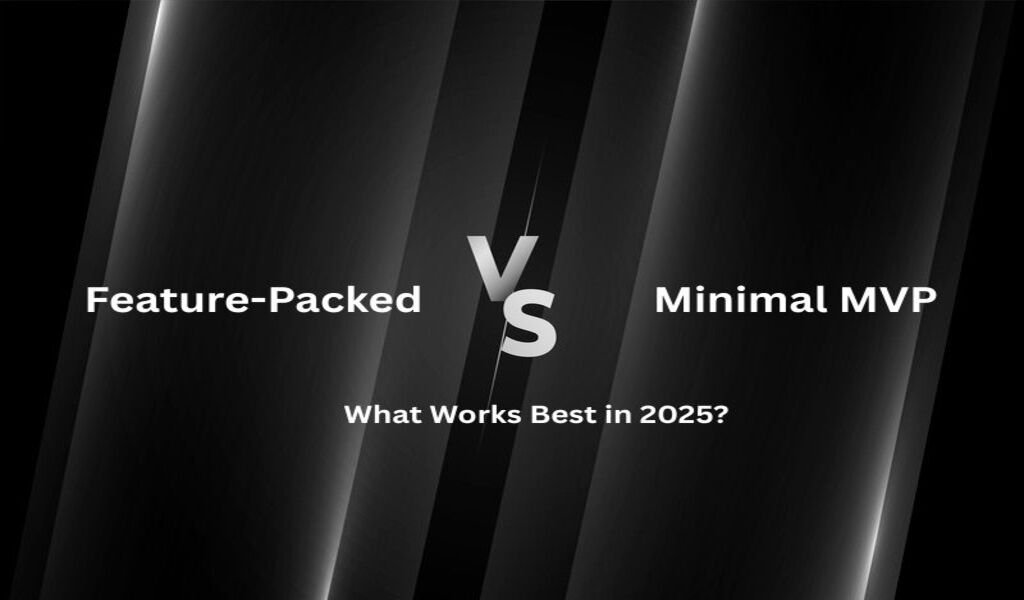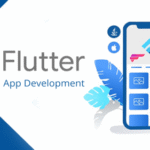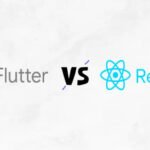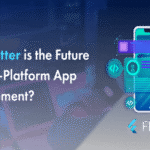AI DevelopmentFeature-Packed vs. Minimal MVP: What Works Best in 2025?

Table of Contents
Introduction
When it comes to launching a digital product in 2025 — speed matters. But so does strategy.
Whether you’re building a B2B SaaS tool, a mobile marketplace, or an AI-powered app, one major decision will shape your launch success:
Should you build a feature-packed product — or start with a minimal viable product (MVP)?
It’s a classic startup dilemma. And in today’s noisy, fast-paced tech world, the answer isn’t one-size-fits-all.
This guide breaks down both approaches, highlights current trends, and helps you decide which strategy aligns with your business goals.
The MVP Debate in 2025: What’s Changed?
Back when Lean Startup was first introduced, building an MVP meant hacking together the bare minimum, releasing it, and learning fast. That approach still works — but the environment in 2025 is different:
Users expect a seamless UI/UX, even during beta
Investors want working demos with traction, not just ideas
GenAI and automation are expected in most categories
Speed to market is easier than ever with better tools
But competition is fiercer, and expectations are higher
The core difference now is that MVPs need to be as delightful as they are functional. Clunky experiences no longer get forgiven — even early adopters have plenty of options. So, should you go lean and learn or launch strong and scale?
What Is a Minimal Viable Product (MVP)?
An MVP is the simplest version of a product that still delivers real value. It’s not a prototype. It’s a live, working version that early adopters can use — and ideally, love. MVPs are all about speed, focus, and validating your riskiest assumptions.
Good MVPs typically have:
One clear goal (like booking a ride, uploading a doc, or tracking expenses)
Just enough features to complete that goal
Simple, intuitive UX
A feedback mechanism to learn from early users
Examples:
An AI chatbot that answers only FAQs
A marketplace app that allows listing but not purchasing
A wellness app with only a daily mood tracker
Partnering with a Mobile App Development Company in Chennai gives startups the edge they need to launch MVPs quickly — without cutting corners on quality. These teams specialize in rapid prototyping, clean and intuitive UI design, and building scalable architecture from day one. Whether you’re building a Flutter app for both Android and iOS or need backend APIs to power your MVP, they’ve got the full-stack capability to move fast while maintaining stability. More importantly, they understand that an MVP isn’t just a smaller app — it’s a strategic tool to validate your idea, attract early users, and secure funding. With the right partner, you get more than just developers — you get product thinkers who can help you focus on what truly matters at launch.
What Is a Feature-Packed Launch?
A feature-rich product includes more advanced functionalities at launch. These are typically built when:
The product operates in a highly competitive market
You’re targeting enterprise users who expect depth
There’s sufficient funding or internal pressure to impress quickly
Feature-rich products may include:
Multi-role systems (e.g., admin, vendor, user)
In-app chat, video conferencing, and notification systems
CRM and ERP integrations
Advanced analytics or machine learning
Offline mode, multilingual support, dashboards, and automation layers
This approach requires more time, resources, and testing — but also helps reduce churn at launch.
Pros and Cons: MVP vs. Feature-Rich
| Strategy | Pros | Cons |
|---|---|---|
| MVP | Fast, cost-effective, focused testing | Users may churn if UX is too basic |
| Feature-Rich | High retention, better reviews, full vision | Slower to build, higher risk and cost |
How to Decide: 5 Key Factors
Here’s how to choose between an MVP and a full-feature build:
1. Who is your first user?
- Are they developers and tinkerers? Then MVP is fine. But if you’re targeting corporate buyers, hospitals, or large educational institutions, you’ll need to go further.
2. What does your competition offer?
In emerging categories, you can afford to start light. In saturated markets, you need to match or exceed expectations.
3. What’s your funding and timeline?
If you’re bootstrapping, don’t burn time and money on an untested vision. But if you have seed or Series A funding, investors might expect a stronger V1.
4. What level of technical complexity is involved?
GenAI tools, real-time sync, image recognition — all these require strong backend planning. Don’t try to hack these into a rushed MVP.
5. What feedback loop do you need?
If your product’s success depends on real-world feedback — like how users interact, what they skip, or where they drop off — then launching an MVP isn’t optional, it’s essential. The sooner you get it into users’ hands, the sooner you learn what actually works. A AI Development Company in Chennai can help you build an MVP that doesn’t just function — it learns. They can integrate lightweight AI features, like behavior tracking, smart suggestions, or automated onboarding flows, to capture insights early on without overengineering the product. It’s all about balancing your must-have functionality with the intelligence needed to evolve fast. This way, you’re not just launching quickly — you’re improving rapidly based on real data.
Real-World Examples: MVP vs. Full Build
| Industry | MVP Version | Feature-Rich Version |
| EdTech | Login + test flow | LMS with analytics, video classes, payments |
| FinTech | Manual expense tracking | Auto-sync, GST reports, credit scoring |
| HealthTech | Booking system | Teleconsultation, prescriptions, lab links |
| E-commerce | Catalog + cart | Full checkout, loyalty, shipping integration |
| Logistics | Driver check-in | Fleet management dashboard, delivery analytics |
| HR Tech | Attendance tracker | Payroll, compliance, multi-user portals |
What Users and Investors Expect in 2025
Users Want:
Beautiful UX — even in MVPs
Intuitive onboarding
Consistency across devices
Real value in under 3 taps
Investors Want:
Market feedback
Lean codebases
Traction over perfection
Clear go-to-market strategy
That’s why even MVPs today are polished. Good UI and speed are not “extra” — they’re expected.
Budget & Timeline Comparison
| Scope | Timeline | Budget (INR) |
| MVP (core features) | 4–6 weeks | ₹6–10 lakhs |
| MVP + Admin Panel | 6–8 weeks | ₹10–15 lakhs |
| Feature-Rich Product | 10–14 weeks | ₹20–40 lakhs |
| Feature-Rich + AI | 12–20 weeks | ₹30–60 lakhs |
What affects cost:
Multi-role support
Real-time features like chat, maps, sync
Third-party services and APIs (payment, CRM, AI)
Cross-platform support (Flutter/React Native vs. native)
Case Study: MVP First, Scale Later
Client: India-based HR SaaS startup (under NDA)
Initial MVP: Leave + attendance tracker
Delivered In: 5 weeksPhase 1 Outcome:
110+ companies onboarded
₹1.2L monthly revenue in 3 months
Raised ₹1.5 crore seed funding
Phase 2 Expansion:
Added payroll automation, timesheets
Launched mobile + web dashboards
Built analytics for HR managers
This approach helped them gain traction, iterate fast, and pitch real users during fundraising.
Choosing the Right Development Partner
The best development teams don’t just build — they guide. They:
Validate ideas
Prioritize features
Suggest MVP-to-scale roadmaps
Deliver across mobile, web, cloud, and AI
Choosing the right tech partner isn’t just about finding coders — it’s about teaming up with a crew that understands your product, your users, and your goals. A Mobile App Development Company in Chennai that offers UX design, product consulting, and AI integration under one roof gives you a major advantage. These teams help you validate your idea, map out a phased rollout, and ensure every feature added has a purpose. You get a clean, user-friendly app built with scale in mind — whether you’re launching a quick MVP or planning a full-scale platform. From mobile and web to backend and cloud, everything stays aligned. And with AI baked in from day one, your product starts smart — and keeps getting smarter.
Final Thoughts + CTA
There’s no universal answer to “MVP or full launch.”
But there is a right answer for your product.
- If you’re exploring product-market fit, go MVP.
- If you’re solving for enterprise or regulated environments, build deeper.
Start with:
A focused idea
A small, excited team
A launch deadline you’ll stick to
Ready to launch your product the smart way?
Book a free strategy session with our Chennai-based team and get expert feedback on your roadmap, timeline, and build strategy.
FAQs
1. Can I launch an MVP without an admin panel?
Absolutely. Start with user workflows — admin tools can be added later.
2. Should I include AI in my MVP?
If it’s core to your experience, yes — but keep the use case narrow and testable.
3. Will investors respect an MVP?
Yes, if it proves there’s demand and early traction. MVPs show you’re data-driven.
4. What’s the best tech stack for MVPs?
Flutter + Firebase/Node.js is ideal for fast MVPs. For scale, use microservices and CI/CD.
5. How soon should I update my MVP?
As soon as you spot usage friction, user drop-offs, or new feature requests — usually within 4–6 weeks.




